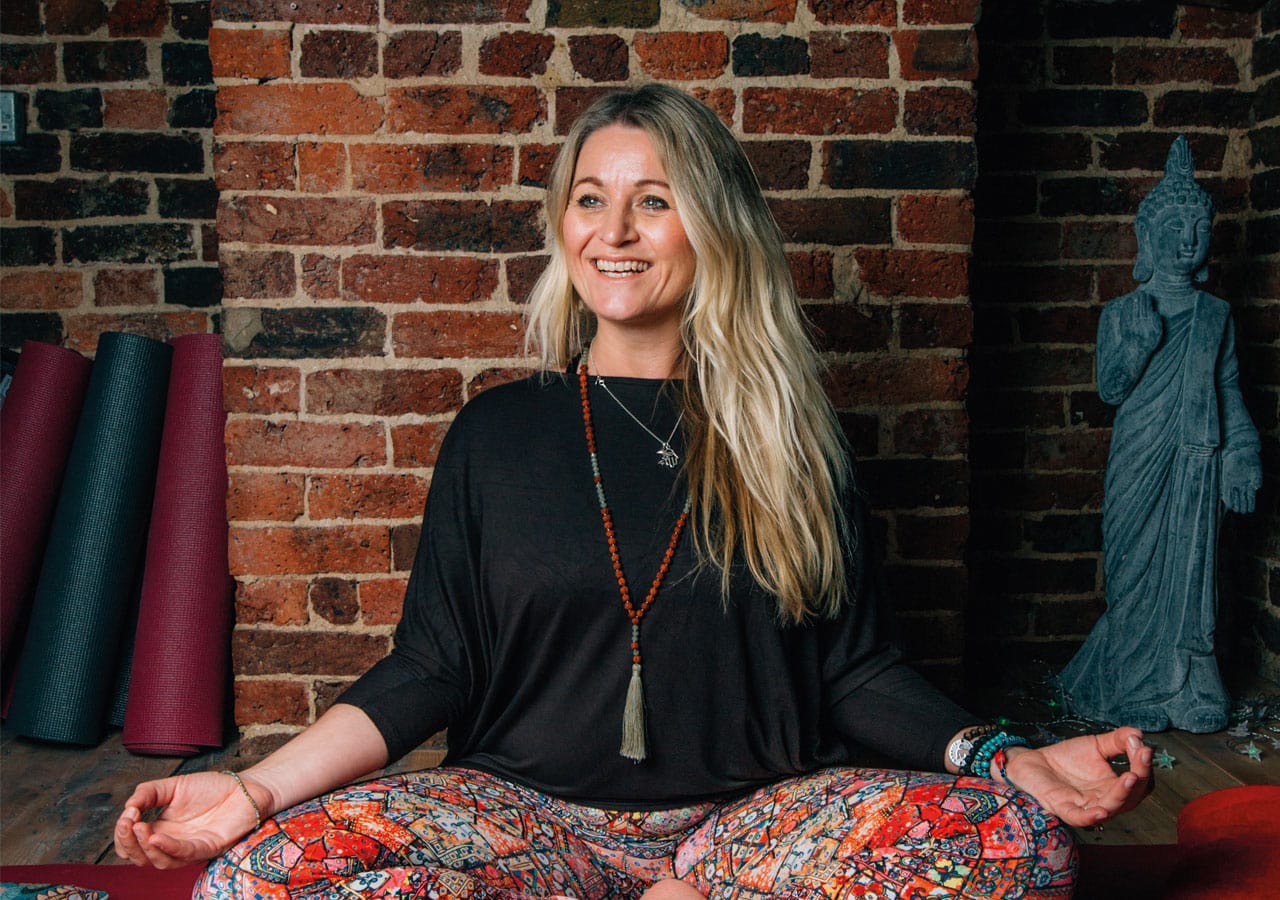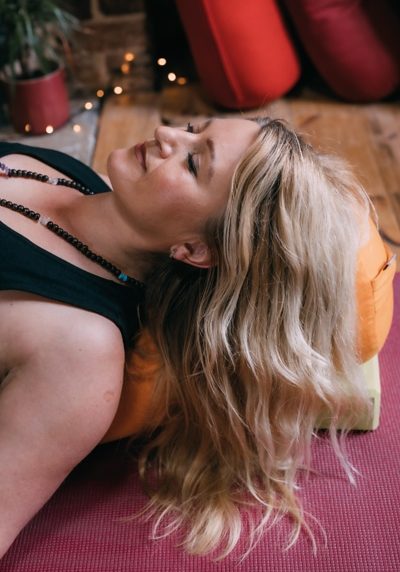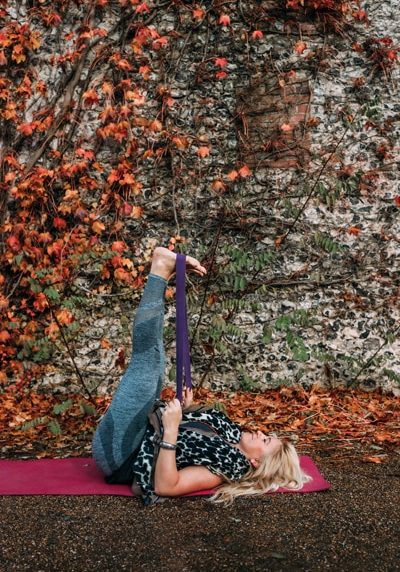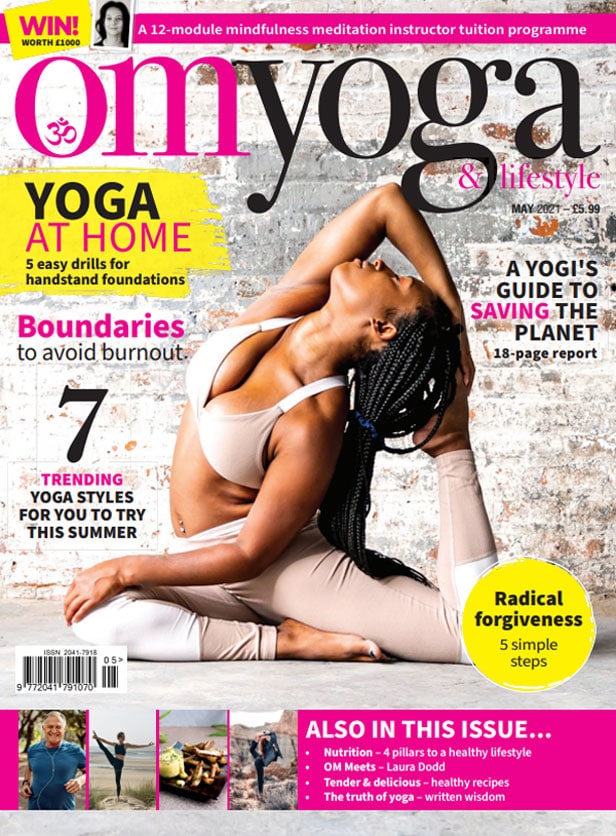
Restorative Yoga
Soften, relax and release with Restorative Yoga. By Eva Kristlova
Restorative Yoga is a restful yoga for stressful times. This is a nourishing and soothing style of practice that creates inner peace and harmony and leaves you feeling recharged, reset and restored. You will find deep peace in your yoga practice that can carry you through the tides of your life.
The soothing and well-supported poses offer us the opportunity to linger quietly for a few moments and savour the simple sweetness of life. Restorative practice guarantees to leave us nourished and well rested. The poses are held for several minutes at a time and you are deeply supported by bolsters, blankets, pillows and blocks. Restorative Yoga practice is like an internal retreat. Deeply nourishing and healing; you will feel as if you have received the biggest and most beautiful hug.
Slowing down
There is a bigger need than ever now to slow down, pause and reset. The busyness of our everyday life, the constant stream of news, social media updates and stress resulting from the world situation can be very overwhelming. This slower yoga practice, that creates a feeling of peace and deep release, is now more popular than ever before; a yoga style that’s an absolute must in this day and age.
To start a restorative practice, take time to get comfortable on your props and make any necessary adjustments. Your comfort is important as we hold postures for longer than in a regular yoga class. Use your inner wisdom to guide you toward greater comfort, making any modifications you need. The bolsters and blocks support the body to release muscular tension. As the body is fully supported, we can relax into the shape of the pose and ‘receive’ rather than ‘do’ the pose.
Rest & restore
Although the restorative poses might look easy and peaceful, they can be challenging especially for a beginner yogi. Be patient and give your body time to settle and release any built-up tension. Give yourself time. In a restorative practice, you create time to let go of your everyday stresses and truly let go of any busyness and worries. The goal is to give you the ability to drop down with ease into a place of deep contentment. Your body will relax, the mind will quieten, and you will rest quietly in the present moment and see clearly the peace that resides within you.
The main objective of this practice is to relax and restore. Let gravity do the work, connect with the breath. If your body gives you signals that you need to come out of these postures, please do. The focus is on the breath and calming our body and nervous system.
Benefits
Restorative poses help relieve the effects of chronic stress with the help of props that provide a supportive environment for total relaxation. Classes are designed to move the spine in all directions as a healthy spine enhances our overall wellbeing. Some restorative poses are backbends, some are forward bends, side bends, spinal twists and supported inversions.
Supported inversions, such as legs up the wall, reverse the effects of gravity. As we sit or stand most of the day, blood and lymph fluid accumulate in the lower extremities and by changing the relationship of the legs to gravity, the fluids are returned to the upper body and heart function is enhanced.
During our practice the heart rate slows down and our organs and nervous system are likewise soothed. Restorative Yoga also balances the energies and hormones in our body.
The benefits of a restorative practice also include becoming more patient, improved concentration, and feeling more grounded, with a sharpened intuition.
Popular restorative poses
Supported Savasana with a bolster under the knees, pillow supporting the head and an eye pillow across the eyes. Practice at the beginning and the end of your class. This soothing pose gives you a time to arrive, check in, to slow down your breathing and the activity of your mind. The support under the knees releases tension from the lower back.
Reclined Cobbler where we lean a bolster on a stack of blankets or blocks and then lay back on it, with a block under each thigh, feet bound together by a strap. This pose provides opening to the hips and chest and invites time to focus on breathing and/or heart opening meditation.
Supported Bridge pose with a bolster under the lower back, knees bent, feet on the ground. This pose releases tension in the hips, abdominal muscles and chest. With the head lower than the heart we deepen the relaxation response.
Supported Child’s Pose with a bolster between the knees. Fold forward over the bolster and rest your head on it. A blanket may be placed either under the hips or on the lower back. This pose releases tension in the back and hips. The bolster provides a feeling of comfort and security.
Legs up the Wall. Rest your legs on the wall and enjoy the soothing effect this posture has on your nervous system. Alternatively, support your hips by a bolster or folded blanket and raise your legs up in the air. Excellent for your circulation and redirecting the blood flow to your heart and brain.
Soften, relax, release
It is impossible to have a peaceful mind in a tense body. It is impossible to have a relaxed body inside a cascading mind. To feel good, you need peace. Calm your thoughts to calm your being. Relax your muscles to release distracting thoughts. The body remembers everything. Let go, so you can feel good. Outside and In.
Eva Kristlova is a yoga teacher in East Sussex, where she teaches online and in person and runs a beautiful yoga space, the Yoga Life Studio (www.yoga-life.co.uk) in Eastbourne. She would like to share a free Restorative class with readers, just email her: info@yoga-life.co.uk


Images: @sarahcarmodyphotographyuk
RESTORATIVE YOGA 101
Pace of the class: Very slow. The postures are held for anything between 3-10 minutes (even 15 if time allows).
Props: Bolsters, Blocks, Cushions, Blankets, Straps, Eye pillows.
Benefits: Release of muscular tension; Calming the nervous system; Sense of contentment and peace; Ability to let go of daily worries and stress; Improving patience and self-awareness; Balancing energies and hormones in our body; Connecting with breath; Giving yourself that much-needed ‘me time’ to reset and recharge.




